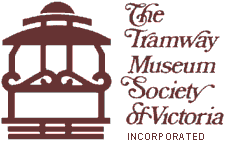
| About TMSV | Visitor information | Our collections |
Current projects | Feature articles | Join TMSV | Useful links | TMSV news |
 |
|||||||||
|
|||||||||
|
About the TMSV |
Planning schemes and the Bylands Tramway Heritage CentrePlanning Schemes have been in existence in Victoria since 1954, when the Melbourne & Metropolitan Board of Works (MMBW) released the first Planning Scheme for Melbourne. Planning Schemes generally contain the policies and provisions for the use, development and protection of land in a locality. They are legal documents that are constantly evolving and changing — particularly after a change in State government. The Mitchell Planning Scheme applicable to Bylands was assented to in late 1999 by the then-current Minister for Planning Robert McClelland, as part of a streamlining of all Planning Schemes. It replaced the Planning Schemes of the former Shires of Seymour, Pyalong, Broadford and Kilmore [1] with an updated scheme applicable to the whole of Mitchell Shire. The TMSV, of course, is interested primarily in how the Mitchell Planning Scheme impacts the former Heathcote railway reserve on which it is sited. Most of the this reserve has been changed under the Mitchell Planning Scheme to many different zone types, reflecting the new uses applied to the land since the closure of the Heathcote railway. However, the former railway reserve between the southern edge of Kilmore at Tootle Street southwards until just short of the easternmost ormer level crossing of Arkells Lane [2] is zoned as a Public Use Zone — Transport (PUZ-4). This is the only portion of the former Heathcote line still in a transport compatible zone, due to the presence of the TMSV at Bylands. The TMSV leases the railway reserve from Tootle Street to McKerchers Lane, and owns the freehold from McKerchers Lane to Union Lane, including the former Bylands station site. Therefore, both our freehold and leasehold land is zoned as PUZ-4. Under Section 1 of this zone, no permit is required to operate what is termed a “natural systems railway”, (ie, a railway as formerly operated), a railway station or a tramway, . Whilst the term tramway is a term common to all Planning Schemes, this meaning has its origins in the timber and quarry tramways rather than urban street tramways. This zone type appears in Planning Schemes to allow the opportunity for operation of rail freight transport rather than using road for heavy freight haulage — at least in rural settings. This zone type also allows for street tramways constructed away from roads, such as the reserved track section on the Footscray to Moonee Ponds tramline. Controls known as overlays may be applied in a Planning Scheme in addition to land use zones. These overlays are used to protect land and various features of land. Our Bylands property is subject to four different overlays, the first of which is a heritage overlay applied to the “former railway Department residence and platform mound”. A permit would be required if we were to subdivide this land, demolish or remove the house or platform mound, construct an alternative building or display sign, or externally paint a presently unpainted surface. Routine maintenance of the existing features is not affected by heritage overlay. This intent of this heritage overlay is to ensure any work done on these features does not impact on the historic values embodied therein. Therefore, we are in the process of painting the residence in its original colour scheme, as well as replacing aluminium framed windows with wooden window frames of comparable type to those originally fitted by Victorian Railways. Another heritage overlay has been applied to the Exhibition Goods Shed, as the result of its listing on the Victorian Heritage Register. The entire site is subject to erosion managment and salinity management overlays. These require that a permit [3] be sought when major earthworks or vegetation removal is proposed. Bylands Heritage Tramway Centre is certainly unique from a town planning perspective. Few areas of rural Victoria would now have this combination of zoning and overlays. Other rural areas zoned as PUZ-4 are generally high usage mainline or secondary branch railways, and are legally inaccessible unless you are traveling on a passenger service with a ticket. Most former railway reserves in Victoria have been either retained as rail trails or sold and redeveloped — usually for rural farming purposes. There are no other tramways in a rural environment in Victoria, whilst those in Melbourne are located chiefly within road reserves and are subject to the Transport Act rather than town planning controls. So, Bylands is a special place — and not just for our trams. Footnotes[1] The Shires of Seymour, Kilmore, Broadford and Pyalong were amalgamated to become the Mitchell Shire by the Kennett government in the early 1990s. [2] Arkells Lane was crossed twice by the former Heathcote railway. [3] Permit applications are often placed on advertisement hoardings in order to assess community and neighbourhood interest in a proposal. The community therefore has the ability to object and be heard by the planning authority should they wish to do so. |
![]() Last
updated 2
August 2007.
Last
updated 2
August 2007.
![]() Content
copyright © Jeff
Stocco 2007. Edited by Russell Jones. Reproduced with permission.
Content
copyright © Jeff
Stocco 2007. Edited by Russell Jones. Reproduced with permission.